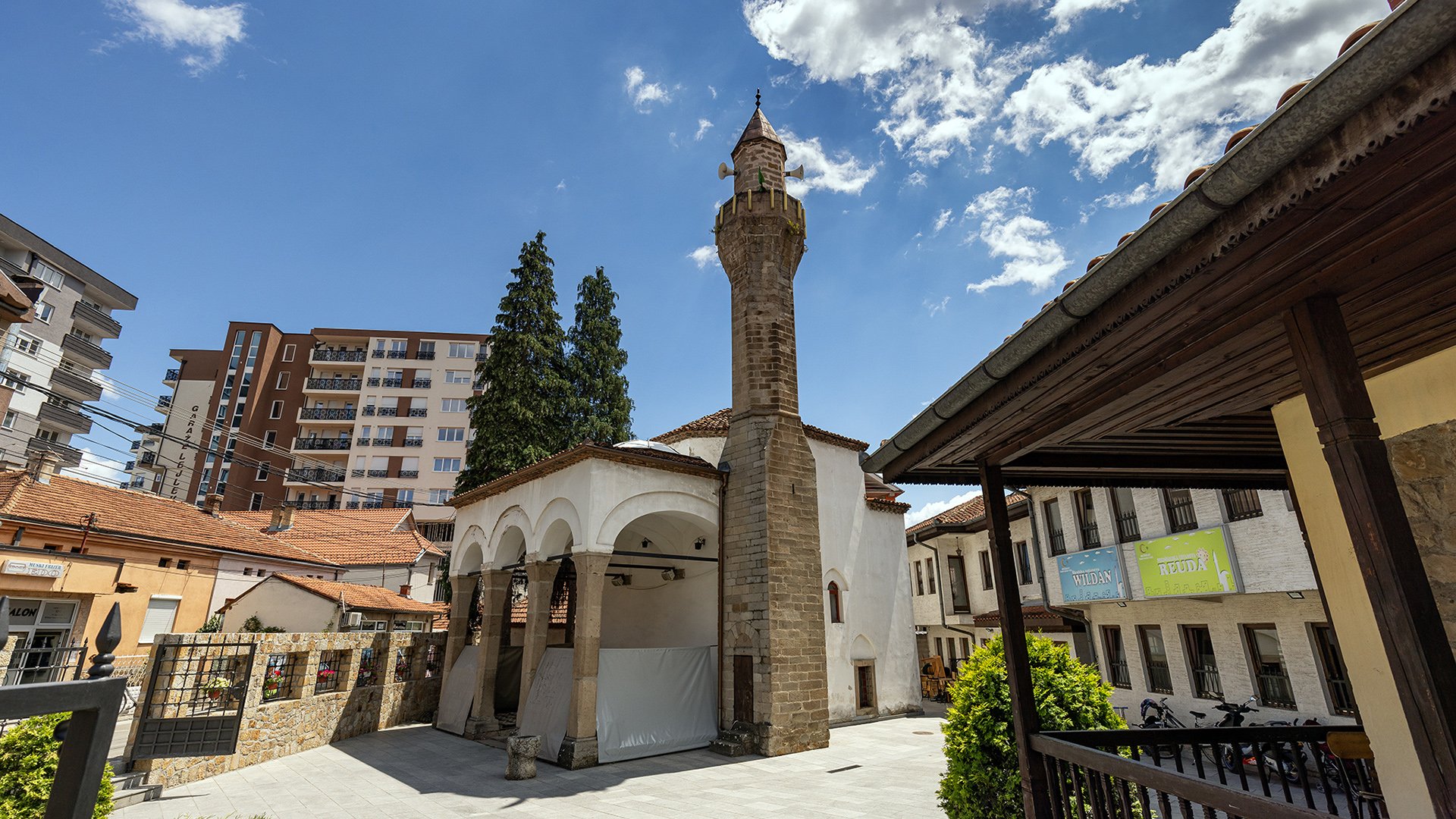
HAVALE AHMED-BEY (LEJLEK) MOSQUE IN NOVI PAZAR
Author: Prof. Hajrudin Balić, PhD, Faculty of Islamic Studies in Novi Pazar • Photo & video: Mirza Hasanefendić
Havale Ahmed-bey Silahdar Mosque, better known as Lejlek Mosque, was named after its builder Ahmed-bey Silahdar. He was a silahdar or silihdar (from Arab. silah weapons and Pers. gift), which means: a holder of weapons, a sword bearer, and as a court title it refers to a personal courtier of mamluk and Turkish sultans, viziers, beylerbeys and sanjak beys.
According to sources which deal with mosques in Novi Pazar, Lejlek Mosque is one of the oldest. It is believed that only Gazi Isa-bey Mosque, built in the 1450s, is older, and most probably this mosque was also built at that time, commissioned by Ahmed-bey.
Besides the mosque, he commissioned building of the Havale Ahmed-bey neighborhood and a tabakhana (tannery) (Čar Drnda, 77).
The mosque is listed in Turkish censuses from the 15th and the 16th century, and the same is true of the neighborhood around it, which had 22 households in 1516, 44 in 1528/30, 56 in 1540, and 21 in 1604 (Ibid., 84-85).
Ahmed-bey was also the owner of a čifluk (estate). When Ahmed-bey Silahdar passed away, the mosque inherited a waqf worth 20,000 akčas.
There is a story according to which one of the greatest Turkish sultans, Mehmed II el-Fatih, in his conquest of Bosnia in 1459, while passing through Novi Pazar, prayed ikindija-namaz (afternoon prayer) in this mosque, and the story is that, on this occasion, he prayed to the Supreme Lord „that adhan from this mosque, in this neighborhood, be heard until the Doomsday“.
It is more likely that it happened during the sultan's conquest of Serbia when he, in 1459, ordered the grand vizier Mahmut-pasha to conquer the still undefeated Serbian fortresses. In this year, six years after seizing Constantinople, Serbia also became a province of the Ottoman Empire (Hammer, 181).
The mosque is situated in the Abdurahmana Manja Ćorovića Street, in a neighborhood which, like most others, has not managed to preserve its original name, Havale Ahmed-bey Silahdar neighborhood, but is now called Ćukovac.
References:
Čar Drnda, Hatidža, „Osnivanje Novog Pazara i njegov razvitak do kraja XVI. vijeka“, Novopazarski zbornik, no. 8, Novi Pazar, 1984.
Opširni popis bosanskog Sandžaka iz 1604. godine (2000), vol. 2, ed.: Adem Handžić, Bošnjački institut Cirih – odjel Sarajevo, Orijentalni institut u Sarajevu.
Von Hammer, Joseph (1979), Historija turskog-osmanskog carstva 1, Zagreb.















